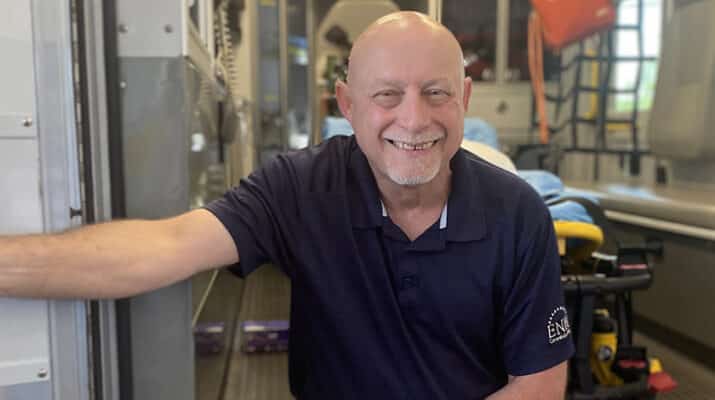By Deborah Jeanne Sergeant
If you are interested in the medical field and enjoy high adrenaline situations, working as an emergency medical technician might be for you.
Abby Harning, professor of emergency medical technology at SUNY Erie in Williamsville, felt initially drawn to EMT work as she wanted to enter the medical field.
“I heard you could do EMT work without a lot of education, so that’s what I decided to do,” she said.
Compared with that of a physician, it’s a much shorter academic career. EMT programs at community colleges or other schools last one semester (about 100-150 hours) and accept applicants as young as 17 (must be 18 upon completion). After successfully passing the exam, EMTs must complete 36 hours annually as a refresher and recertify every three years to maintain their credential.
In addition to the education, Harning said that candidates should be willing to work in inclement weather, possess patience and demonstrate an ability to cope with stress.
“Have some healthy hobbies to distract yourself when you’re away from work,” she said. “Have friendships away from emergency medical service. We’re great support to each other, but having a life balance is important.”
The state requires that each person working as an EMT must be able to lift 125 pounds individually or 250 with assistance, read and speak English fluently, and carry a valid driver’s license. Individual agencies may also have additional requirements, such as a commercial driver’s license for a mobile stroke unit.
The role has significant turnover because of the entry-level nature of the work. Many people move on to working as a paramedic. Paramedic classes take one to two years to complete with an average of 1,000 hours of training and 800 hours of clinical time. Taking a National Registry EMT course and passing the associated exam can enable an EMT to work on cruise ships, oil derricks, in rural areas and internationally.
“There’s a community paramedicine which hasn’t caught on yet in New York, where we do a home visit of a patient to do telemedicine with a physician and provide a visit that prevents having to transport a person to the hospital,” Harning said. “They have the ability to draw blood, use a portable lab to analyze the blood, do ultrasound assessment, transmit EKGs and do things like start IVs and administer medications. All of this helps keep the person at home.”
Managing mental stress is part of working as an EMT. Ray Hubert, second assistant chief with Tri-Community Ambulance Service, Inc. in Sanborn, learned this years ago. He currently volunteers with the service 20 hours weekly with the 100% volunteer company, which makes more than 2,300 calls annually. He had trained to become an EMT as a young adult and worked in the field from 1979 to 1982 but left the field for 16 years “because of the depression, PTSD and inappropriate coping mechanisms,” he said.
Eight years ago, his daughter wanted to become an EMT, so he joined her in training. He eventually went on to become a paramedic.
“I realized I had passion for this again, “Hubert said. “I remembered why I did this in the first place: to make a difference.”
Now he teaches EMTs and paramedics. He believes that good candidates for this work should have an aptitude for helping others and a desire to continue to learn.
“We need people who are adaptable,” Hubert said. “We identify, improvise, adapt and overcome. You have to have a relatively stable mental capability. There’s a lot of stressors and mental health is a really big concern for us and overall. There’s a lot of alcoholism and drug addiction.”
Anyone interested in working as an EMT can advantage of opportunities at volunteer agencies that provide free classes for those who pass the exam.
Top image: Ray Hubert, second assistant chief with Tri-Community Ambulance Service, Inc. in Sanborn, Niagara County.

